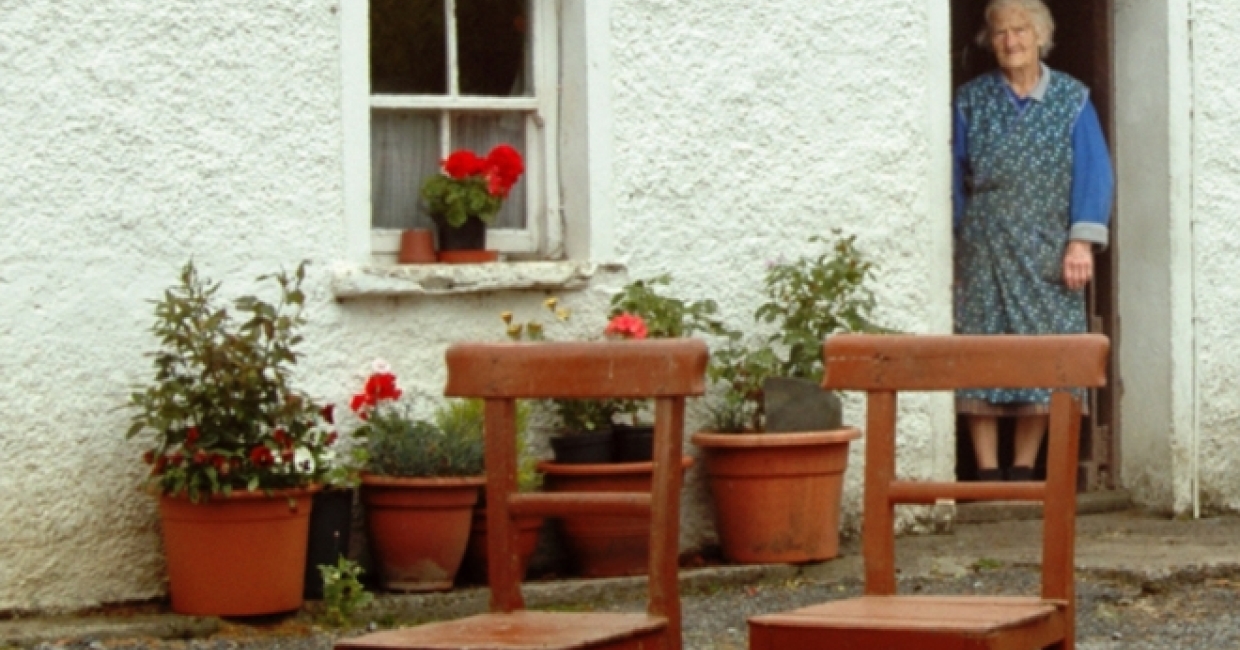Using images from a Nikon D70 still camera he found on eBay for $150, Irish historian Tony Donoghue has animated and imbued the most unlikely objects with life and humour, turning them into viral film stars, says Elish Bul-Godley …
I am referring to his film Irish Folk Furniture, shot in the small village of Ballinderry, Co Tipperary – a nine-minute short that features several pieces of rural Irish furniture from the 19th century, rescued, restored and injected with a life of their own through stop-motion animation, time-lapse and clever editing.
A sitting through this inventive example of film-making can only be described as a journey filled with quirky conversations, soft, exotic accents, and lovingly-rendered design detail. It probably outstrips any video previously done by the Irish Tourism Board or Craft Council in relaying the warmth, charm and pared-down beauty of the Irish rural landscape, with its culture, stories, and strong craft-based traditions.
"It occurred to him how Irish folk furniture was relegated in some cases to junk status, whilst in places like Europe, the UK and The States, folk furniture was valued and even considered trendy"
This rustic gem of a documentary has been taking the film festival circuit by storm, starting with a breakthrough Short Film Jury Prize for Animation at the Sundance Film Festival this year. Tony has gone on to win prize after prize, screening 47 times in 17 countries. The film has continued to feature at a host of European and stateside cultural events as we speak, winning more accolades such as Best Short Documentary award at the Global Visions Festival in Canada.
It’s a story that also has roots in the UK as well. Like the rest of us, it usually takes a great deal of distance to make us realise and value the heritage we take for granted. Tony’s realisation came whilst living in London and working at the Natural History Museum. It occurred to him how Irish folk furniture was relegated in some cases to junk status in farms, sheds and barns, whilst in places like Europe, the UK and The States, folk furniture was valued and even considered trendy, taking pride of place in many contemporary homes.
As Tony says: “We are permanently surrounded by things that, in themselves, are interesting, but sometimes those same things have to be isolated out for us to see them properly.”
With no outright industrial revolution, wartime experience or even courtly patronage to draw from, one could say Irish folk furniture has an earthier relationship with its owners – hewn, designed and bolted together by everyday folk for pragmatic, social and familial purpose. To some it was a dark reminder of a poorer pre-famine past, left to rot out of sight and mind. Nevertheless, the interviews and stories garnered for the film reveal great anthropological insight.
It reminds me of the quote from Hope Mirrlees, from Lud-in-the-Mist: “A house with old furniture has no need of ghosts to be haunted.”
Recently Tony generously restored additional pieces including two kitchen dressers, mug rack, settle bed and footstool to display alongside a screening of the film short at the recent Irish Furniture & Interiors Fair at the RDS in October. It was finished off with authentic ornaments and his warm presence on the first day of the show.
“If you put the furniture back in the house it continues to evolve"
The exhibit was received warmly by visitors to the event and provided many Proustian moments for the older ones. His collaboration was an expression of his belief that folk furniture needed to be seen in context, not hidden in some museum gallery. The trade event presented him with an opportunity to remind retailers, interiors designers and manufacturers in the present-day furniture sector of the nation’s folkloric heritage in furniture making.
As Tony says: “If you put the furniture back in the house it continues to evolve. And so what if a dog takes a bite out of it? It’s part of the evolution. It’s the most sensible way of curating living culture.”
His anecdotes at the trade event were a joy to listen to – like the story of the old farmer who was offered a hundred dollars by an American dealer who was going to sell it for eleven hundred. He told us about 100-year-old pieces of furniture discovered in sheds used to store cans of paint. These were as valuable as any ostentatiously-decorated Victorian antique due to their provenance. These roughly crafted objects were lovingly interwoven within the generational fabric of rural homesteads through their stories, precious remnants of a nation’s lost history.
Watch a trailer of Irish Folk Furniture here.
Elish Bul-Godley is a freelance blogger, community manager and event organiser with the Irish Furniture & Interiors Fair.












